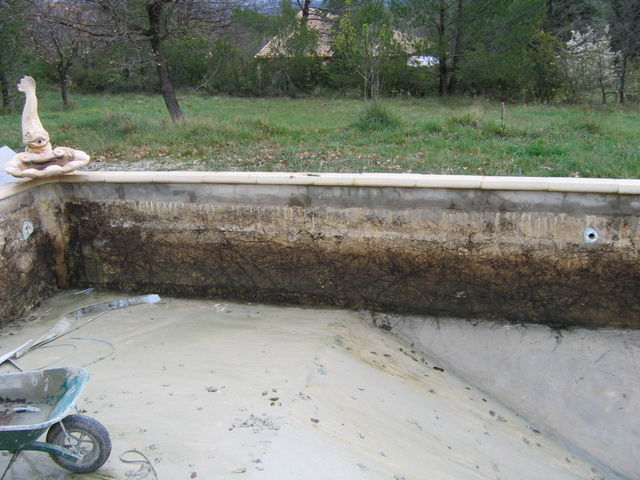Following on from the New pool discussion the other day posted by Ian Jackson, http://www.survivefrance.com/forum/topics/swimming-pool-advice-please
I thought I would open up the topic discussing some of the various types of pool contruction available. Please feel free to join in with experiences of your pools.
To kick off I am a firm believer in insulated pool structures. Many years ago this was deemed uneccesary as all the heat escapes from the surface via evaporation and radiation or so it was thought. Now it is true that more heat escapes from the surface of the pool but a reasonable cover can prevent this and water loss in general. There is however quite a lot of heat that escapes through the walls and floor of the pool and more so if the ground is wet.
In the UK all new outdoor pools have to be built with insulation as part of the building regulations (Part L)
Why? Because after extensive research by UK Universities and the Building research establishment it was proven that heat loss from the walls and floor is significant enough to warant it, in short insulation can half your heating bills.
The first type of construction is the polystyrene block pool, this as the name suggests is a pool like leggo construction from blocks of expanded polystyrene. Expanded polystyrene can take on water as the spheres that make up the blocks are fused together at manufacture but this leaves tiny gaps between the speres and water can get in. During harsh winters the water can expand during freezing and blow the insulation which leaves millions of tiny spheres. The manufacture of the blocks also means there are thick webs between the walls of the blocks and this can lead to tree roots etc growing through the structure.

One pool building company is aware of these problems and render the outside of the block contruction to prevent water getting in, most don't.
We have the more traditional pool contruction of concrete blocks, these should be the high density types and not hollow if possible. Insulation can then be fitted to the inside of the pool structure and floor to keep the heat in.
Sprayed concrete, or shotcrete. This type of construction allows for any shape you wish and is very strong. Difficult to insulate though. The canoe water park at the Olympics was made that way and they had a maximum tolerance of 5mm on the whole contruction so the guys who did that reckon they can build any shape you desire.
Kit pools come in all sorts of materials from sheet steel to polypropelene panels, most of these can be insulated reasonably easily and the floor can be insulated too. some sheet steel pools can have a limited life if not backfilled (back fill around the pool excavation area) correctly as the ground can move and cause a barelling of the walls over time. The excavated earth should never be used to backfill, only self compacting media like pea beach stones or concrete in some cases.
Boat pools as they are known, these cover a whole range of pool from mainly polyester resin as GRP had problems with blistering and frequently were fitted with liners when they got a few years old as the surfaces are quite hard to clean. Why are they called boat pools? In areas with high water tables they have been known to pop out of the ground floating on the water. This can even happen in extreme cases with concrete pools. A special pressure relief valve can help prevent this.
Some of the latest resin pools now come fully finished from the factory with tiled surfaces etc and also in bolt together sections for easier transport. Sprayed foam insulation can be applied to the back of these pools quite easily.
Pre cast concrete pools make a very strong pool as they are made in a factory in a controlled way then transported to site and bolted together, because they are made in moulds adding additional components or specifying anything out of the ordinary like insulation or an extra skimmer or even the position of components could make it difficult to obtain what you want.
Above ground pools, these really could use insulation as the slightest breeze will begin to lower the temperature of the water compared to it's inground cousin. The liners are generally thinner too so less insulation there.
With all pools it is better to work with nature than against it, wind direction has a lot to do with helping the water towards the skimmers. with some pools (pre cast or moulded) that could mean altering the direction of your pool to suit the manufacturers design rather than your chosen garden layout.
Why would you want to change the manufacturers tried and tested design?
One reason could be to have a better design. Saddly most of the "equipment designs" seemed to have been copied and no matter where you look they are the same but is that the best layout for maximum efficiency? Probably not. Latest technology has taught us better ways to achieve easier to maintain pools which means lower maintenance costs and more time enjoying your pool not cleaning your pool.